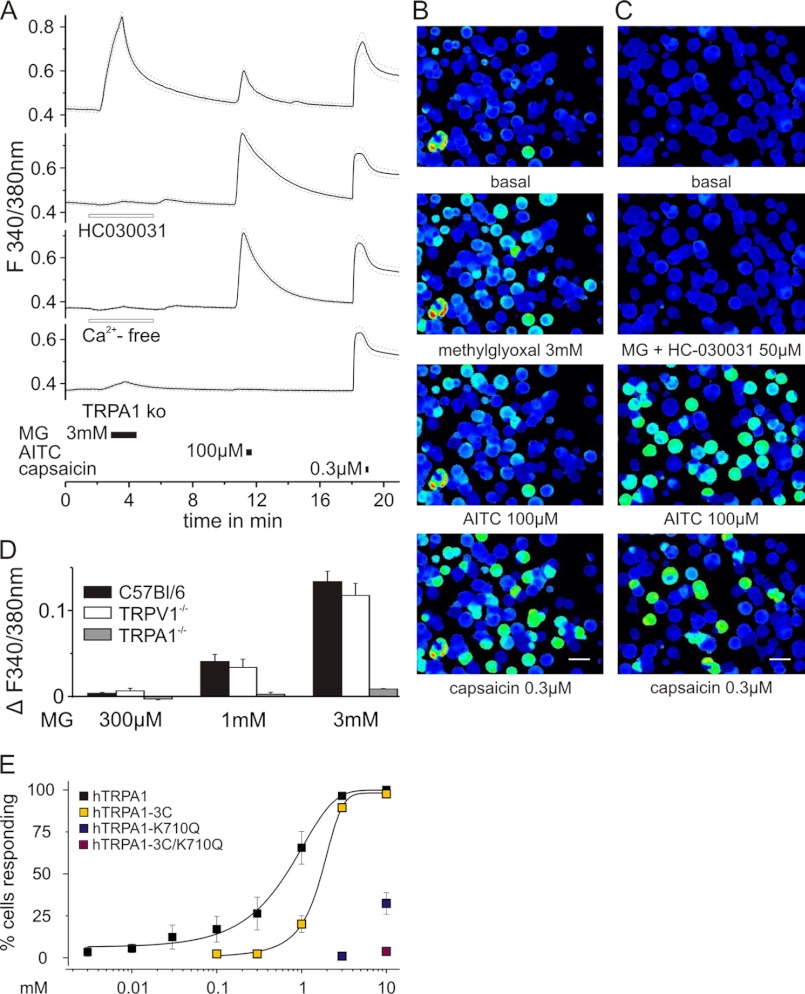FIGURE 2.
Calcium influx evoked by MG involves modification of intracellular cysteines and lysine residues of TRPA1. A, MG (3 mm) applied for 90 s evoked an increase in intracellular calcium ratiometrically measured in fura-2-stained DRG neurons (n = 72; 53.3%) of C57Bl/6 mice. Responses were blocked by the TRPA1 antagonist HC030031 (50 μm; n = 161) and by calcium-free external solution (n = 169) and were absent in DRG neurons of TRPA1 knock-out mice (n = 123; S.E. is displayed as dashed lines). MG-sensitive neurons were also mostly activated by AITC (100 μm for 20 s) and occasionally by capsaicin (0.3 μm for 10 s), which stimulated the largest subpopulation (B). HC030031 abolished MG-induced calcium transients in a population of neurons that comprised AITC- and/or capsaicin-sensitive cells (C; scale bar, 100 μm). As shown by the area under the curve, MG-induced responses were concentration-dependent in DRG neurons of C57Bl/6 and TRPV1 knock-out mice, whereas no increase in intracellular calcium was seen in TRPA1 knock-out DRGs (D; n > 60 each). E, concentration-dependent activation of native hTRPA1 and of different mutants involving exchange of cysteine and/or lysine residues. Measurement of calcium signals in transfected HEK 293t cells indicated that MG activated human TRPA1 receptors even at low (3 μm) concentration (black squares) with an EC50 of 0.7 ± 0.1 mm. All cells responding to MG also showed an increase in intracellular calcium upon stimulation with carvacrol (250 μm for 30 s), which served as an index for sufficient transfection. In HEK 293t cells transfected with the human TRPA1 C621S/C641S/C665S mutant (hTRPA1–3C; yellow squares), the EC50 was shifted to higher concentrations (EC50 = 1.8 ± 0.1 mm). Single mutation of the lysine residue at position 710 to glutamine (hTRPA1-K710Q; blue squares), which cannot be modified by MG, strongly reduced sensitivity to MG application. Residual responsive cells were only found at 3 and 10 mm concentration. The combination of cysteine and lysine mutations hTRPA1–3C/K710Q (red square) almost completely abolished responsiveness to MG. Data are mean ± S.E.

